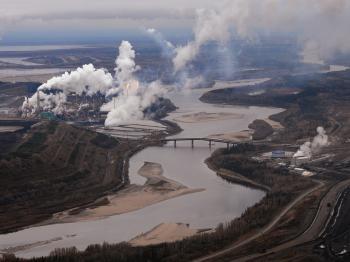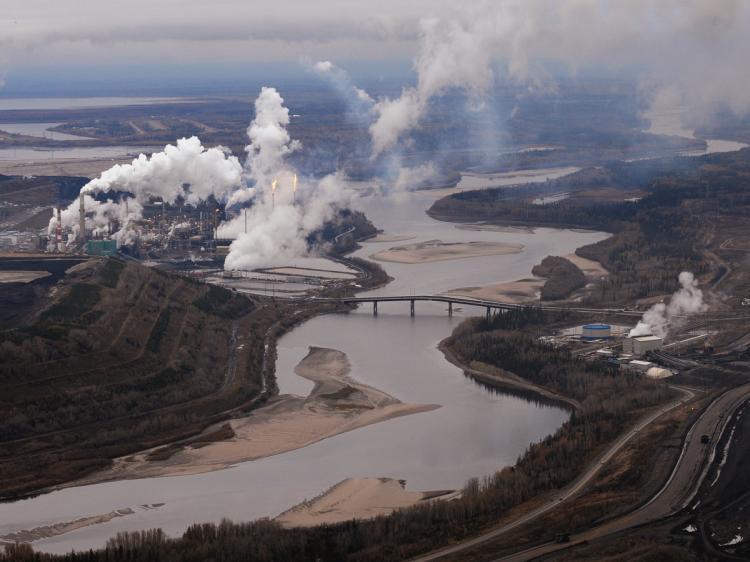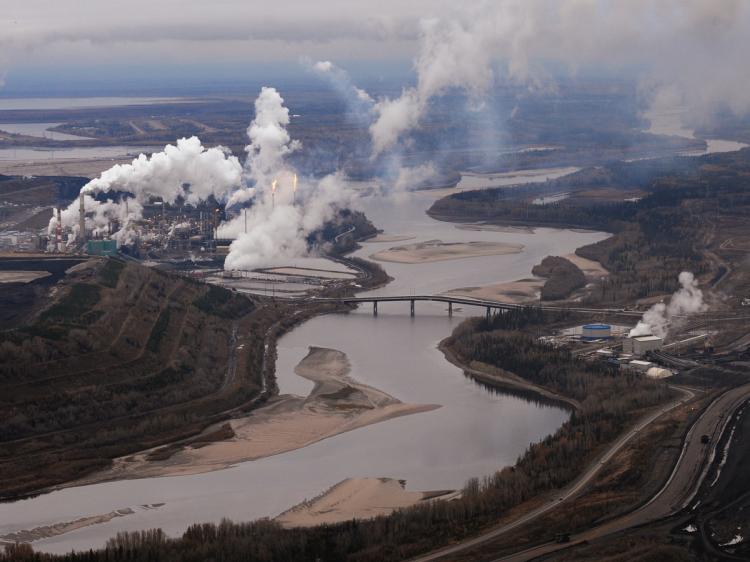The “Rethink Alberta” campaign, created by Corporate Ethics International (CEI), includes billboard ads in some U.S. cities and an online video. The video bashes Alberta’s multibillion dollar oil sands industry for its environmental footprint, and initially claimed that the oil sands were destroying an area twice the size of England.
After complaints about distorting the size of the area affected, CEI cited an “editing error” and changed the line to now say the oil sands are destroying an area the size of England.
But that is still inaccurate, according to Alberta Environment Minister Jim Prentice, who says the area covered by oil sands operations is closer to 232 square miles.
“This is not an editing error, when you go from claiming that it was twice the size of England, to an area once the size of England down to the facts, which are only 620 square kilometers [239 square miles],” Prentice told Quebec Media, Inc. (QMI) Agency.
“I think it underscores just how there are misrepresentations and misleading claims being made about Alberta, and about Canada that are unfair and they’re not responsible.”
According to the Alberta government, the oil sands measure in total around 54,131 square miles, roughly the size of Florida. About 232 square miles, or 0.0043 percent of that area, is devoted to oil sands surface mining activity.
“Tell Alberta’s Tourism Division that you will not visit Alberta until they stop the expansion of the tar sands and negotiate with environmental and First Nations groups to clean up and phase out existing operations,” reads a statement on CEI’s website.
The 90-second video interweaves images of oil-covered ducks and sludge pouring into tailings ponds with scenic images of Alberta’s tourist sites.
CEI has also paid for billboard ads in four U.S. cities that show images of oil-covered birds from the Gulf of Mexico oil spill disaster and the 2008 Syncrude Canada tailings ponds incident resulting in the death of 1,600 ducks, calling Alberta “the other oil disaster.”
The ads are intended to discourage tourists from visiting Alberta.
CEI says it intends to broaden its campaign to the United Kingdom and purchase online ads on Google as well as major tourist websites.
“Our goal is to wake up the tourism industry in Alberta to the fact that tar sands are a threat to theirs and our future—both an environmental and a reputational threat,” CEI says.
The campaign has incensed Alberta’s Premier Ed Stelmach who last week told reporters that the ads are both unfair and inaccurate.
“This, of course, does anger me, to a large degree because it’s an attack on about 100,000 Albertans whose lives depend on the tourism industry,” Stelmach said.
Opposition in U.S. to Next Phase
Alberta’s oil production in 2009 was approximately 1.9 million barrels per day of crude oil. About 1.5 million barrels per day were exported south of the border, accounting for 15 percent of crude oil imports in the United States.
Currently there are plans for the Keystone XL Pipeline Project proposed by TransCanada to carry crude from Alberta to refineries in the United States.
Environmental groups and some U.S. legislators are criticizing the project. Last month, 50 members of Congress signed a letter to U.S. Secretary of State Hillary Clinton voicing their opposition to the project.
One signatory, Rep. Henry Waxman (D-Calif.), chairman of the congressional Committee on Energy and Commerce, also sent a personal letter to Clinton last week opposing the Keystone XL pipeline.
Waxman decried the Keystone as “a multibillion dollar investment to expand our reliance on the dirtiest source of transportation fuel currently available.”
“While I strongly support the president’s efforts to move America to a clean energy economy, I am concerned that the Keystone XL pipeline would be a step in the wrong direction,” his letter stated.
The U.S. State Department has delayed the timeline for federal agencies to make a decision on the project by 90 days, giving them until the end of the year to decide if the project is in the nation’s interest.







